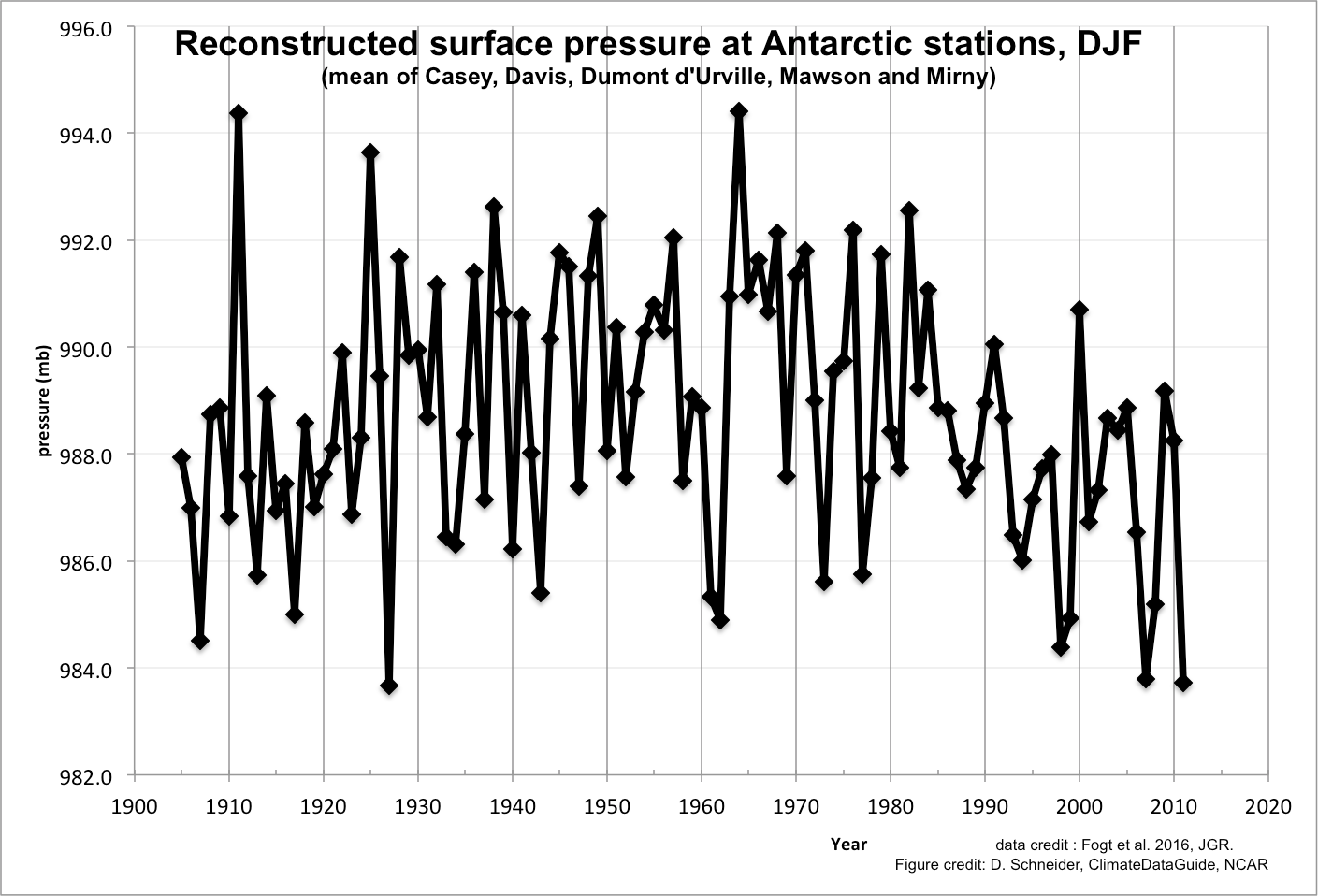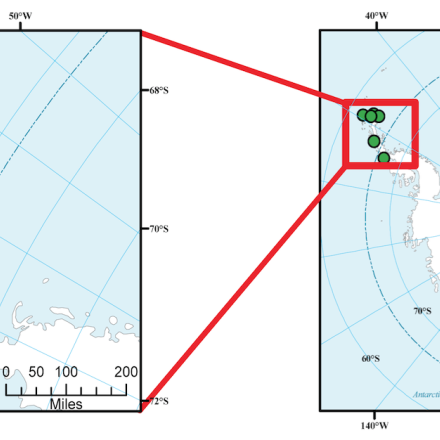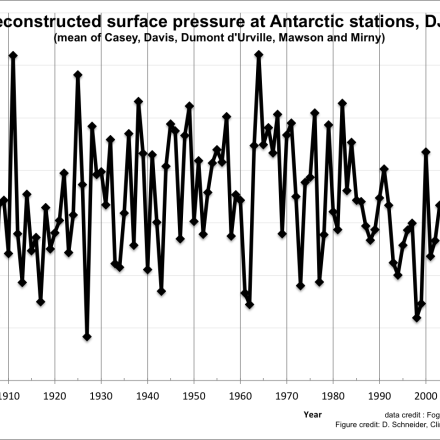Antarctic Seasonal Pressure Reconstructions 1905-2013

This dataset consists of seasonally resolved timeseries of surface pressure at 18 Antarctic research stations, spanning 1905-2013. Routine meteorological observations began at most of these stations only around 1960, leaving a very short instrumental record on which to assess Antarctic climate variability and change. Surface pressure is one of the most important variables for assessing changes in climate; for example, a drop in surface pressure since ~1980 around Antarctica likely reflects the influence of the ozone hole. The pre-1960 data were reconstructed based on statistical relationships between the original Antarctic station records and much-longer, mid-latitude station records. A variety of tests were performed to assess the robustness of these relationships and to characterize uncertainty in the reconstructions.
Key Strengths
Approximately doubles the length of the original Antarctic station records
Uses well-established statistical methods and validation tests
Key Limitations
Reconstruction skill is not consistent across all stations and all seasons (DJF is best season and Antarctic Peninsula best region)
Linear method assumes stationarity in predictor-predictand relationships
Fogt, R. L., C. A. Goergens, M. E. Jones, G. A. Witte, M. Y. Lee, and J. M. Jones, 2016: Antarctic station-based pressure reconstructions since 1905: 1. Reconstruction evaluation. J. Geophysical Res.-Atmospheres, 21, 2814-2835, doi:10.1002/2015JD024564
Cite this page
Acknowledgement of any material taken from or knowledge gained from this page is appreciated:
National Center for Atmospheric Research Staff (Eds). Last modified "The Climate Data Guide: Antarctic Seasonal Pressure Reconstructions 1905-2013.” Retrieved from https://climatedataguide.ucar.edu/climate-data/antarctic-seasonal-pressure-reconstructions-1905-2013 on 2025-04-03.
Citation of datasets is separate and should be done according to the data providers' instructions. If known to us, data citation instructions are given in the Data Access section, above.
Acknowledgement of the Climate Data Guide project is also appreciated:
Schneider, D. P., C. Deser, J. Fasullo, and K. E. Trenberth, 2013: Climate Data Guide Spurs Discovery and Understanding. Eos Trans. AGU, 94, 121–122, https://doi.org/10.1002/2013eo130001
Key Figures
Other Information
station data from SCAR-READER, GHCN, CRU, ISPD

